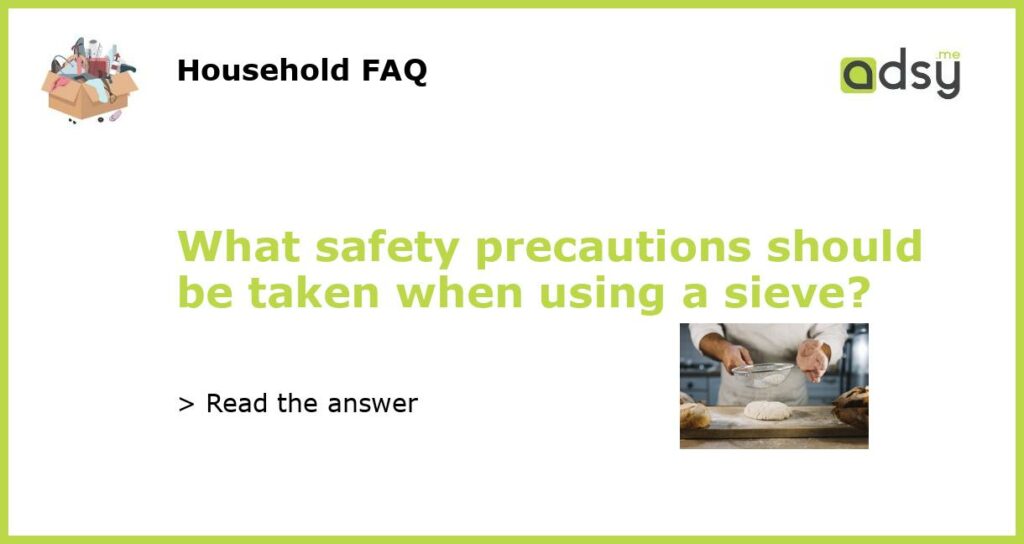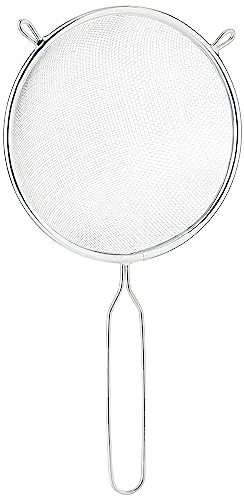Safety Precautions When Using a Sieve
A sieve is a simple tool commonly used for filtering and separating particles of different sizes. It is essential in various industries such as food processing, construction, and mining. However, when using a sieve, it is crucial to take certain safety precautions to prevent accidents and ensure the well-being of the users. Here are some safety tips to keep in mind:
Wear personal protective equipment (PPE)
Prioritize your safety by wearing the appropriate personal protective equipment (PPE) when using a sieve. Typical PPE includes safety goggles or glasses, gloves, and a dust mask.

The goggles or glasses will protect your eyes from any debris or particles that may fly out of the sieve during the filtration process. Gloves will shield your hands from sharp or rough materials, while a dust mask or respirator will prevent the inhalation of dust or other harmful particles.
Choose the right sieve size and material
Ensure that you are using the appropriate sieve size and material for the task at hand. Sieves are available in different sizes and are made from various materials such as stainless steel, brass, or nylon.
If you are working with larger particles, use a sieve with a larger mesh size to prevent clogging. On the other hand, if you are dealing with finer particles, use a sieve with a smaller mesh size to achieve the desired level of filtration.
Furthermore, consider the material of the sieve. Stainless steel sieves are more durable and can withstand heavy usage, while nylon sieves are lighter and more suitable for general household applications. Choose the right sieve based on the nature of your work to ensure efficiency and safety.
Secure the sieve properly
Before using the sieve, make sure it is securely fastened or held in place. The sieve should be stable and properly supported to avoid any accidents or unexpected movements during the filtering process.
If you are using a mechanical sieve, ensure that it is securely attached to the appropriate equipment or machine. Failure to secure the sieve properly may result in the machine shaking or the sieve shifting, which can pose a safety hazard.
Avoid overloading the sieve
When using a sieve, it is important not to overload it with excessive materials. Overloading the sieve can lead to uneven distribution of particles and cause it to become unbalanced or break.
Only fill the sieve with a reasonable amount of material that fits comfortably within the sieve frame. This will ensure proper filtration and prevent any strain or damage to the sieve or the equipment it is attached to.
Clean and maintain the sieve regularly
Regular maintenance and cleaning of the sieve are essential for its optimal performance and longevity. After each use, remove any remaining particles from the sieve and wash it thoroughly to prevent build-up and clogging.
Inspect the sieve for any signs of wear and tear, such as holes or damaged mesh. If you notice any damage, replace the sieve immediately to avoid potential accidents or compromised filtration.
Additionally, ensure proper storage of the sieve when not in use. Store it in a clean and dry area, away from any potential hazards.
Using a sieve can greatly enhance the efficiency and accuracy of various processes, but it is essential to prioritize safety when operating this equipment. By following the safety precautions mentioned above, wearing PPE, choosing the right sieve size and material, securing the sieve properly, avoiding overloading, and maintaining the sieve regularly, users can minimize the risk of accidents and ensure a safe working environment.






